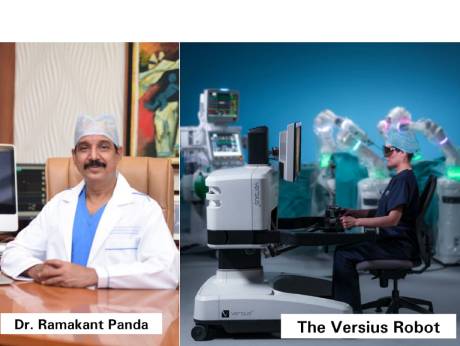
Mumbai, September 2 2020: In the COVID-19 era, when carrying out surgeries has become difficult, Robotic Surgery provides minimally invasive procedures to patients, while providing greater protection to the doctors and other healthcare professionals, when compared to manual surgical procedures.
An estimated number of 313 million people all over the world undergo surgery everywhere. With the looming COVID-19 crisis, the health of these patients has been compromised. Currently, Robotic technology comes as a solution to the surgical challenges.
Says Dr. Ramakant Panda of the Asian Heart Institute, Mumbai, one of just a few centres in India offering patients surgical robotic procedures: “Patient safety is our key priority and with COVID-19 we need to make sure we can conduct surgery in the best way possible for patients. We believe that surgical robotics offers this enhanced safety for patients. With physical distancing maintained while the surgeon sits at the console, this has the potential to reduce the likelihood of the patient or surgical team catching COVID-19. We are happy we will be offering surgery using Versius, a surgical robot. Robotic surgery can enhance surgery and help patients in the COVID era, as well as has the potential to support surgery during future pandemics. When conducting manual minimally invasive techniques, the surgeon is within very close proximity of the patient with more of the surgical team in the operating room, so this considerably increases the risk of contracting the infection and infecting the patient. In robotic surgery, the surgeon is more than 6 feet away while also reducing the number of people in the operating room."
He adds: “Versius, is controlled from a console away from the operating table, but with clear sight and easy access to the patient always. In addition, as the surgeon operates both the instrument and visualisation arms there is no need for an assistant to operate the camera – helping reduce the risk of COVID transmission to patient and hospitals to work efficiently with less manpower at a time of increased pressure. COVID-19 places attention on hospitals to deliver the best patient care at a time when resources are under high pressure.”
“Hospitals need to think differently during COVID-19 and surgical robotics offers a glimpse into the future of the operating room where technology can help the surgical team deliver minimally invasive surgery in a way that brings benefit to the surgical team, patient-and ultimately the hospital. It is important that patients do not delay during COVID, as with Robotic surgery the patient recovers fast with virtually no pain/little pain and there is reduced risk of COVID transmission.It is an affordable option, as it is marginally higher than manual laparoscopy, but has various benefits especially at this time.
Further reading: Tele-robotic surgery: Replicating surgeon’s hands – minus the tremors